I'm currently having problems with an iOS 13 segmented controller. I have this method in which I change the appearance of my segmented controller, it worked great until iOS 13 got out. now I the segmentedController has a grey background always, even if I set the background color to white, or black or whatever.
What Can I do?
- (void)modifySegmentedControl{
if (@available(iOS 13.0, *)) {
[_segmentedControl setBackgroundColor:UIColor.clearColor];
[_segmentedControl setSelectedSegmentTintColor:UIColor.clearColor];
} else {
//I had this for <iOS13, it works great
[_segmentedControl setBackgroundColor:UIColor.clearColor];
[_segmentedControl setTintColor:UIColor.clearColor];
}
[_segmentedControl setTitleTextAttributes:
[NSDictionary dictionaryWithObjectsAndKeys:
[UIColor colorWithRed:0.25 green:0.25 blue:0.25 alpha:0.6], NSForegroundColorAttributeName,
[UIFont fontWithName:@"Poppins-Medium" size:15.0], NSFontAttributeName,
nil]
forState: UIControlStateNormal];
[_segmentedControl setTitleTextAttributes:
[NSDictionary dictionaryWithObjectsAndKeys:
[UIColor colorWithRed:0.25 green:0.25 blue:0.25 alpha:1.0], NSForegroundColorAttributeName,
[UIFont fontWithName:@"Poppins-Medium" size:15.0], NSFontAttributeName,
nil]
forState: UIControlStateSelected];
self->greenBar = [[UIView alloc] init];
//This needs to be false since we are using auto layout constraints
[self->greenBar setTranslatesAutoresizingMaskIntoConstraints:NO];
[self->greenBar setBackgroundColor:[UIColor colorWithRed:0.00 green:0.58 blue:0.27 alpha:1.0]]; //Kelley green
//
[_vistaTable addSubview:self->greenBar];
//
[self->greenBar.topAnchor constraintEqualToAnchor:_segmentedControl.bottomAnchor].active = YES;
[self->greenBar.heightAnchor constraintEqualToConstant:3].active = YES;
[self->greenBar.leftAnchor constraintEqualToAnchor:_segmentedControl.leftAnchor].active = YES;
[self->greenBar.widthAnchor constraintEqualToAnchor:_segmentedControl.widthAnchor multiplier:0.5].active = YES;
}



